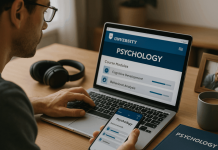What is the Purpose of Education?
There are many beliefs about what the purpose of education is. It could be for Socialization, Academic instruction, or creating a work-ready workforce. Whatever the purpose, there are many things to keep in mind when planning your educational journey. The first and most important is to be open-minded and willing to learn.
Beliefs about the purpose of education
Beliefs about the purpose of education are varied, but they have a common thread: fostering an individual’s intellectual growth. The main objective of education is to help students become free thinkers and active members of society. They should be encouraged to develop critical thinking skills and to propose ideas for the common good. Ultimately, this helps create a balanced society. Humans are born with the potential to learn and should not be stifled by rigid rules and standards. Instead, students should be encouraged to develop their own sense of what is good and what is bad.
A recent study explored students’ beliefs about the purpose of schooling. It surveyed students in Year 9 and 10 and parents and teachers at three secondary schools in urban districts. Researchers identified four categories of beliefs about the purpose of education. One category was rooted in the belief that education is a means to find a job or advance one’s career.
Beliefs about the purpose of education can also influence educational practices. For example, some educators believe that education should imbue students with the knowledge they need to get by. Others believe that education should focus on teaching students how to read, write, and do arithmetic, and this forms the foundation of a good education.
Another important belief is that children learn best when they are given freedom to express their noblest interests and needs. Having the freedom to express themselves allows them to become themselves and be who they truly are. Educating students to develop their reasoning abilities and adaptability is critical to shaping them into productive members of society.
Socialization
Socialization is a process that happens during a child’s educational development. One of the main socializing agents is the school, which aims to teach children the values and norms that they will need as they integrate into society. The purposes of education are to prevent social ills, increase the child’s understanding of the world around him, and teach him acceptable behaviour.
Socialization involves learning how to behave in a group and in a specific environment. Socialization is an essential part of learning about culture, as it teaches people how to fit into a particular group. Education also aims to teach children how to behave within a formal setting. Students receive this socialization in schools, which teach them how to act in a formal setting.
Socialization is an ongoing process during which children learn about their social environment and learn what is acceptable and what is not. The process involves various agents, including the family, school, the media, peers, major institutions, religion, and the legal system. In the first stage of socialization, children learn about language and cognitive skills. They are also socialized into cultural values and morals.
In addition to learning about the world around them, children also develop the ability to build their self-concept and self-regulate. They develop self-confidence, a strong sense of social responsibility, and a drive to achieve things. Children are influenced by their families, but school is their primary source of socialization.
School climate has a direct connection with students’ sense of belonging to a school. A caring environment fosters curiosity and enjoyment in learning.
Academic instruction
The purpose of K-12 education is to prepare students for a successful future in work and life. But it is more than that. The educational system should be a vehicle for personal and social development. That is the purpose of Purpos/ed, a nonpartisan organization that encourages discussion about the purpose of education.
The purpose of education has changed over the years, depending on the needs of society. Traditionally, it was to inculcate religious doctrine and prepare students to live in a democratic society. Later, it was used as a means to integrate immigrants into the mainstream of society. In the 20th century, the purpose of education has become more broad, preparing students for careers in industry, medicine, and the arts. Today, academics and others question whether the purpose of education is changing.
Career-ready workforce
Today’s learners pursue post-secondary education for a variety of reasons, including a desire to get a better job, earn more money, or further their career. While these reasons are not unimportant, higher education has fallen behind the needs of employers, and students and employers alike expect more from colleges than just a diploma. Education must prioritize career readiness in order to meet these expectations.
Effective career readiness activities help students develop awareness of their natural abilities, understand the needs of the labor market, and develop their skills to make them more marketable. These activities range from Career & Technical Education (CTE) programs designed to prepare students for specific industries, to Work-Based Learning Programs, which offer experiential career development outside of the classroom. In addition, the curriculum should be aligned with the labor market to ensure students graduate ready to enter the workforce.
There are many different definitions of “career readiness.” Career readiness refers to students who have the knowledge and skills needed for specific jobs. It encompasses in-class instruction, apprenticeships, externships, co-ops, and other real-world experiences. Students should develop a strong sense of professionalism and personal financial literacy, as well as a strong grasp of workplace norms.
Various national and state organizations are pushing for career-ready standards to help students assess their potential. In 2015, the National Association of Colleges and Employers (NACE) launched the Career Readiness Initiative to address a common need for college graduates. This initiative is based on a set of core competencies designed to prepare college-educated individuals for success in the workplace and career management.
Many states have common core standards for career readiness. However, individual states may have different standards for different grades. The best resource for educators who are implementing career readiness is the administrator. Many administrators are aware of the state requirements and have quick access to them.
Encourage critical thinking
Teachers can encourage critical thinking in their students by providing them with real-world situations. By providing authentic situations, children are more likely to be involved in their studies. They will be more engaged with content and more willing to try new things and solve problems. Teachers should encourage students to develop their passions for the subject matter. Then, they can teach them problem-solving skills.
Teaching critical thinking skills should be specific to the subject matter taught. For example, a history student should learn how to evaluate documents. Likewise, a science student should be taught how to evaluate the scientific evidence. This way, students will understand the importance of critical thinking in a subject. In addition to enhancing student engagement, teachers can also use various teaching strategies to enhance critical thinking skills.
Critical thinking involves analyzing, evaluating, and solving problems. It is an essential skill in the modern world. The skills involved in critical thinking help students think independently and prevent them from following the crowd. For example, the ability to solve problems is one of the most important qualities of a good employee.
One of the most important ways to encourage critical thinking is to ask questions. Asking open-ended questions helps students to connect different ideas. By asking them to think critically, students will be encouraged to explore multiple perspectives and apply what they know in new contexts. This also increases their self-esteem.
It is also important to note that teaching critical thinking skills should not come at the expense of teaching academic content. It is important to have background knowledge, but critical thinking does not require complete understanding of content.










